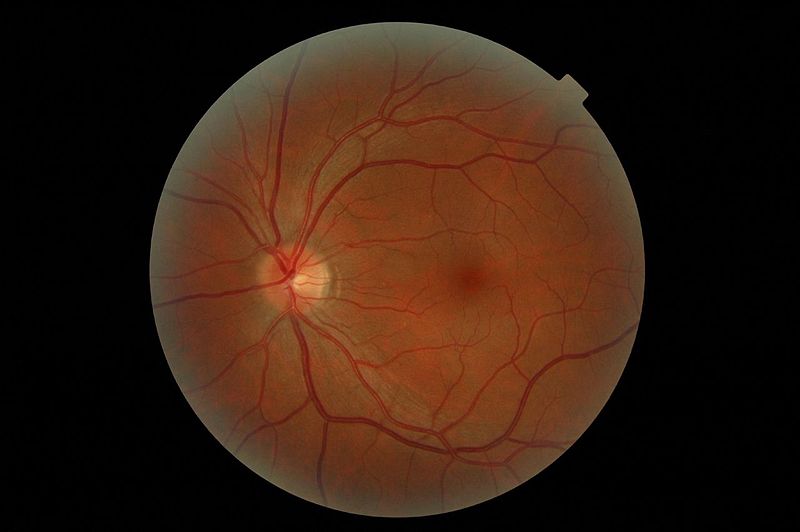Not Just Sleep Issues, Excessive Artificial Light May also Damage the Retina
There have already been numerous reports about the adverse health effects of blue light coming from artificial light sources, especially when it comes to sleep. However, these reports usually don’t come with the warning of the possibility of eye damage. They mostly emphasize the harms of too much exposure to artificial light in relation to sleep deprivation or disrupted circadian rhythms. It’s not about eye health but on sleep-related health issues.
A more recent study however is saying that excessive exposure to light, especially to the light pollution or the overabundance of artificial light, can lead to retinal degeneration. The harmful effects of unnatural illumination have mostly been understated or ignored over the years as modern society has become accustomed to the constant presence of bright light especially in the city. Now, researchers are saying that this has more damaging effects than just the lack of sleep or the disruption of sleep patterns. This research authored by MA Contin, MM Benedetto, ML Quinteros-Quintana, and ME Guido (from various institutions) has been published on the journal Nature.
Perceiving Light
Light is the visible part of electromagnetic radiation, within the 380-780 nm wavelength range although primates (humans included) only typically see the 400-700 nm part. Light is captured by the retina which then transmits the visual information to the parts of the central nervous system responsible for the perception of visuals. This, as everybody should already know, is how animals are able to see. Light is necessary for seeing to happen, for visual details to become perceivable.
However, the act of seeing is not the only role played by light or the visible part of the electromagnetic spectrum. Light also has non-image forming functions. The most prominent among such non-image related functions is the synchronization of circadian rhythms to a 24-hour solar cycle. Light also suppresses pineal melatonin, the hormone that anticipates the daily onset of darkness which influences sleep timing and the regulation of blood pressure.
Earlier research have shown that only the non-image functions of light have been affected by people’s overexposure to light, especially from the blue light from artificial lighting and gadgets.
How Light Damages the Retina
The keyword is overexposure. The research shows that too much exposure to illumination can lead to retinal degeneration or hasten the development or progression of retinal diseases. Humans, over the centuries, have been programmed to see brightness during the day and darkness at night (with complete darkness during sleep). The way technology has made bright lights always accessible, including those coming from mobile devices, is changing the patterns of light-dark cycle. Also, the existence of more wide-ranging light wavelengths and intensities is giving the eyes a shock. Constant exposure to light at different wavelengths and different intensities can lead to the gradual death of retinal pigment epithelium cells.
Light-Induced Damages
It’s not only visible light that damages the retina. Infrared light can also bring about similar effects. The damage result from at least one of the following fundamental processes, photomechanical damage, photothermal damage, and photochemical damage.
Photomechanical or photoacoustic damage happens when light is taken in by a chromophore and reaches an excited state. This forces the chromophore to undergo a chemical transformation, which then results in chemical changes.There is no temperature increase involved in this kind of damage.
Photothermal damage, on the other hand, happens when the rate of light energy deposition by thermal deactivation outpaces thermal diffusion. This causes an increase in the temperature of the exposed tissues. This kind of damage is caused by the exposure to intense flashes of light.
Photomechanical damage is the most common process of retinal damage. It is brought about by the direct exposure to intense light sources including the sun and bright artificial light such as computer screens and ophthalmic instruments (those used during ophthalmoscopic examinations).
Symptoms and Diseases
The most notable symptoms of too much exposure to light include dryness (but may also including watery eyes), eye irritation, blurred vision, increased sensitivity to light, loss of focus, headaches, and insomnia. Some may also develop double vision syndrome. Neovascularization may also arise. This is the formation of new fine blood vessels that are weak that they easily bleed. Accumulated retinal injury over the years are believed to contribute to the aetiology of debilitating eye problems such as age-related macular degeneration and rhodopsin (red photopigment in the retinal rods) mutations that can lead to retinitis pigmentosa.
Solutions and Precautions
Naturally, the solution to overexposure is the reduction of the exposure. To avoid light-induced retinal damage, it is advisable to avoid overusing the eyes. Normal sleep requirements should be observed. Too much exposure to illumination should be curbed. Moreover, it helps using eye protection. There are glasses that can filter out light at wavelengths deemed to become harmful over long periods of exposure.
The eyes are very important parts of the body. They should not be abused and should be given enough time to rest. Eye straining is something that should not be ignored. Further related research will likely show the same results, that too much light can become a problem to the eyes themselves and not just to sleep. There’s nothing wrong with making the most of what technology has to offer, from the more efficient artificial light sources at night to the the bright displays of mobile devices, but it only makes sense to also observe proper care for the organs that enable the enjoyment of this technological creations.


